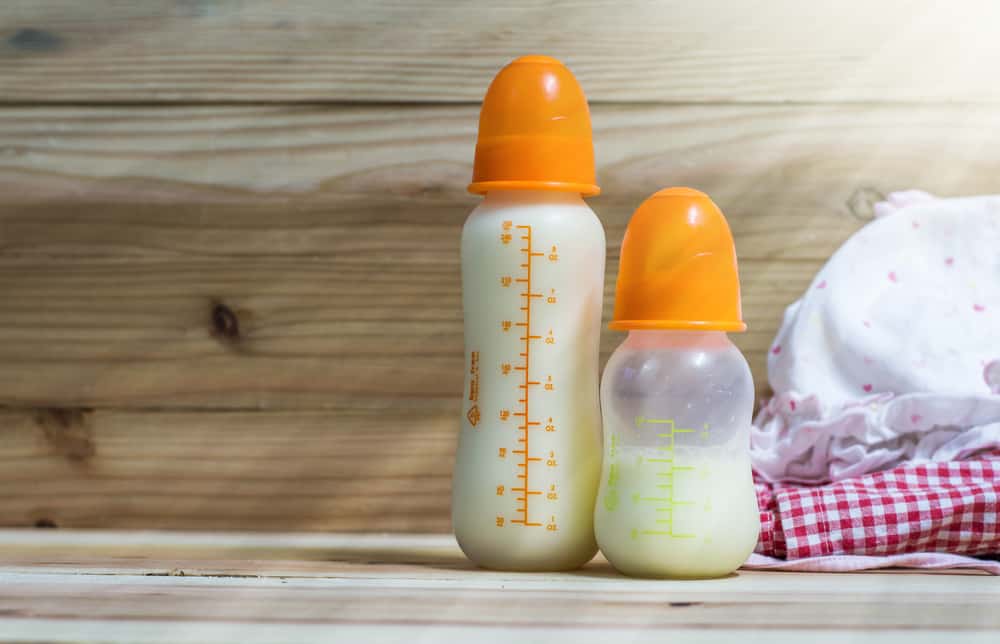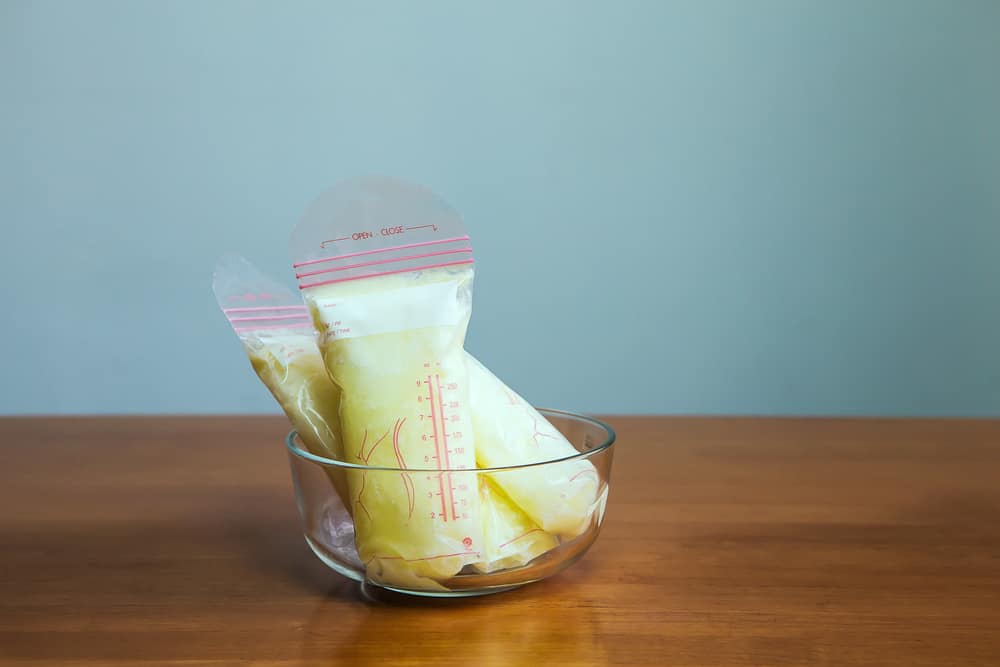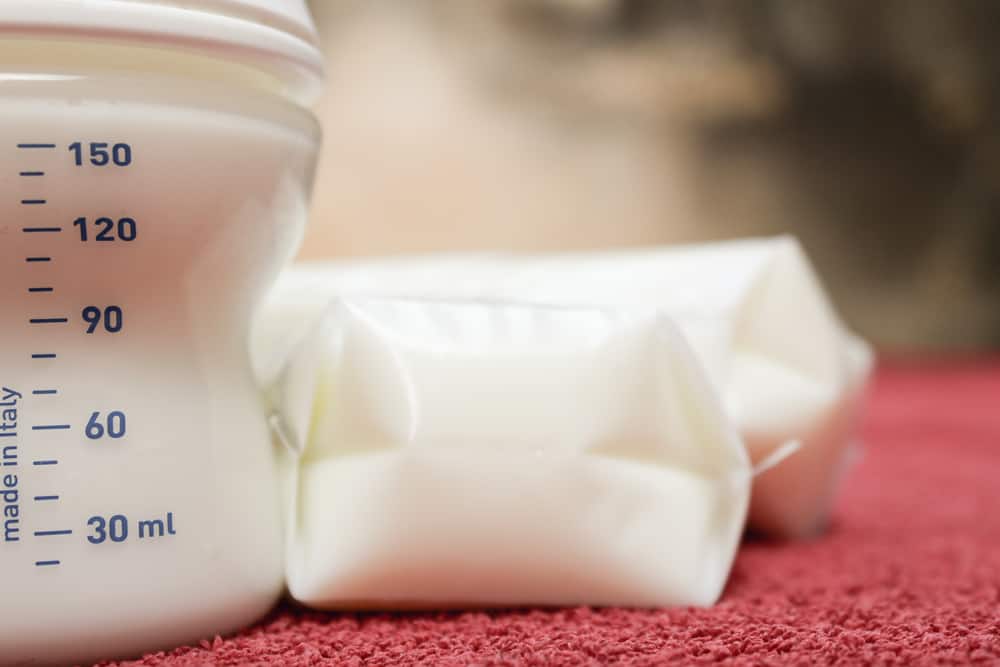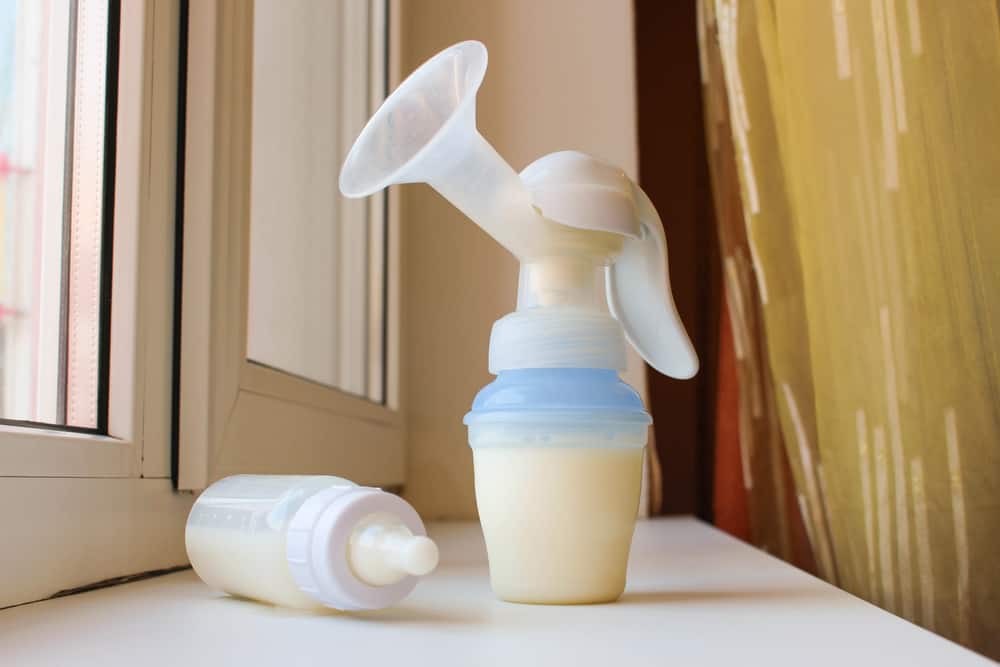“How to make breastmilk fattier?” you Google your Friday night away because you can’t escape the feeling you’re doing something wrong.
Whether you’re feeding your baby, bathing your baby, or even entertaining your baby, there always seems to be something that worries you to the core.
And, how wouldn’t you be worried when your sole purpose as a caretaker happens to be to ensure your baby receives proper nutrition at all times?
Breasts don’t come with gauges telling you whether your baby’s eaten enough or whether your breastmilk is up to par (even though that would be greatly appreciated by every mother ever). This means you don’t know what’s going on with your baby and your breastmilk for the most part.
Breastfeeding moms struggle with doubt whenever they’re trying to figure things out for themselves because they’re bombarded with comments such as “You’re supposed to do that differently…” and “My baby didn’t do that the way your baby does…” from different fronts.
Even when the comments fade away, a swift glance at the breastmilk they finished pumping beforehand can send them spiraling. Breastmilk separates after sitting for a while, with fattier hindmilk rising to the top and boggier foremilk staying at the bottom.
Breastfeeding moms (as if they didn’t already have enough pressure on their plates) often overthink whether their breastmilk’s fatty enough to support their baby’s nutritional needs.
Know that you’re not alone, and know that we’re bringing you a step-by-step guide on how to make your breastmilk fattier and how to understand why fattier breastmilk makes your baby happier and healthier.
Without further ado, here are a few things to keep an eye on before you start switching out your dietary program and your breastfeeding practices.
Why do babies need fatty breast milk?

When you become a mom, you become obsessed with a million questions regarding your baby’s health, growth, and progress.
While you’re trying to become accustomed to your new lifestyle and create a bond with your baby, you’re also becoming some sort of a baby expert (or a baby whisperer).
Sure, you spend numerous hours feeding your baby, chatting with your baby, entertaining your baby, and checking whether your baby’s breathing (we all do that).
But, you spend even more of your precious time researching different matters, reading every baby book ever written, and Google searching questions such as “Why does my baby sweat so much?”, “Why does my baby need breastmilk?”, and “How to make breastmilk fattier?”
One thing’s for sure, breastmilk keeps your baby healthy. First things first, breastmilk supplies all the necessary nutrients in proper proportions (the composition of breastmilk changes as the baby grows).
On the other hand, breastmilk also contains important antibodies that fight off viruses and bacteria, and even protect against allergies. Oh and, breastmilk fat ensures your baby’s physical growth, proper energy levels, as well as proper brain, eye, and nervous system development.
Knowing how significant breastmilk and breastmilk fat are for your baby, there’s no surprise you’re wondering how much fat your breastmilk needs to possess and how to make your breastmilk fattier.
How much fat does breastmilk have?

Before we even start to discuss how much fat breastmilk (typically) has, we have to underline the fact that you should never compare your breastmilk to other moms’ breastmilk. Moms aren’t robots which means we can’t expect them to have the same breastfeeding experiences.
With that out of the way, most breastmilk consists of 87% water, 1% protein, 4% fat, and 7% carbohydrate. Other than that, it also contains minerals such as Calcium, Phosphorus, Magnesium, Potassium, and Sodium, as well as vitamins such as Thiamin, Riboflavin, Vitamin B6, Vitamin B12, Folate, Choline, Vitamin C, and Vitamin A.
When we’re talking about specifics, an ounce of breastmilk (on average) contains 20 calories, 1-1.2 grams of fat, 0.3-0.4 grams of protein, and 2.2-2.6 grams of lactose. More often than not, breastmilk contains an appropriate amount of fat necessary for your baby’s proper development.
On the off chance that you notice that your milk doesn’t contain enough fat, there are a few tips and tricks that can assist with that problem.
How do you know whether you need to make your breastmilk fattier?

Whether or not you need to make your breastmilk fattier, there’s no denying that breastmilk plays a huge role when we’re talking about your baby’s proper development.
When a baby doesn’t get enough fat through breastfeeding, there’s a chance she might start losing weight or not gaining enough weight as appropriate for her age.
Now, when a baby feeds off of milk that doesn’t contain enough fat, there’s a chance that the milk might rush through her stomach faster than the lactose can be digested. What does that mean?
When that happens, a process of fermentation starts within the baby’s gut and causes explosive diarrhea, greenish poops, and uncomfortable gases. Fat reduces the chance of lactose overload by slowing down the time needed for your baby’s gut to digest the breastmilk.
How do you know whether you need to make your breastmilk fattier, then? First things first, there could be other factors playing a role when we’re talking about these occurrences. However, more often than not, when your baby’s experiencing these symptoms, she’s not receiving enough fat through breastfeeding.
When you notice your baby’s not gaining enough weight even though she’s eating enough, or she’s slimming down even though she’s feeding frequently, or she’s showing signs of being cold all the time – chances are you need to make your breastmilk fattier.
Schedule a checkup with your doctor, make sure everything’s great with your health, and don’t shy away from asking how to make breastmilk fattier to appease your baby.
What’s the difference between foremilk and hindmilk?

Now, before we finally address the elephant that’s supposed to make your breastmilk fattier, we have to talk about the difference between foremilk and hindmilk.
We brushed over the fact that these two types of breastmilk possess different amounts of fat, but we didn’t discuss whether or not they affect your baby differently.
Right off the bat, the milk-making cells contained within your breasts don’t make different types of milk – they make the same type of milk.
With that out of the way, foremilk happens to be the milk your baby feeds off of when she starts eating. Hindmilk comes after the foremilk, typically at the end of the feeding session.
Foremilk’s often described as “low in fat” because foremilk consists of water and other nutrients. But, the fat content of the milk depends on the amount of time the milk’s been collecting within the ducts and whether or not the leftover milk’s been drained after the feeding session.
Fat sticks to the sides of the milk-making cells while the watery parts of the milk move down the ducts.
Then, these watery parts combine with leftover milk before they enter your baby’s mouth. Therefore, the longer the time between two feeding sessions, the more diluted the milk becomes.
And, the diluted milk doesn’t contain as much fat as the pure milk that’s stored within the milk-making cells higher up the breast.
Rather than wondering how to make breastmilk fattier, ensure that your baby latches onto the nipple the right way to manage the milk flow better, try different feeding positions, and allow your baby to feed as much as she wants to (babies can sense when they’ve had enough).
How to make breastmilk fattier?

Now, the chances are you’ve probably already noticed you haven’t been producing enough fat.
Fat plays a huge part when we’re talking about your baby’s development, as we mentioned beforehand, and you’re probably freaking out whether you’re going to have to undergo a bunch of experiments to pick up the slack.
When you’re done consulting with your doctor, there are a few tips and tricks that are guaranteed to make the breastfeeding process a little better.
Whether you try changing your eating habits (more healthy fats, more protein) or physically assisting your breasts (and milk-making cells) to perform better, we’re pretty sure you’re going to notice a shift toward better sooner or later.
Without further ado, here’s what we’ve managed to gather.
1. Eat more healthy fats
Contrary to what your heart desires, munching on french fries, burgers, and other fatty foods won’t make your breasts produce better (fattier) milk.
Trans fats and saturated fats are easy to come by and consume, but they’re not the type of fat you should consume when you’re trying to make your breastmilk fattier.
We suggest you swap your McMenus for avocados, sardines, salmon, olives, trout, peanut butter, seeds, and nuts because they bring Omega-3 fatty acids to the table.
Water-soluble vitamins such as vitamins A, B6, B12, and C and fatty acids assist your body to absorb fat (and when you absorb fat your produce fattier breastmilk).
Depending on your personal nutritional needs, health problems, and allergies, there’s nothing stopping you from making avocado toasts, munching and crunching on nuts, and treating your family to a salmon bowl Sunday (to ensure your baby’s health, of course).
2. Eat more protein

When we’re talking about how to make breastmilk fattier, we shouldn’t forget about protein which stimulates milk production and maintains a regular milk supply for breastfeeding moms.
Other than that, consuming enough protein stimulates the production of lactation fluid which balances out the amount of fat contained within the breastmilk, too.
On one hand, protein shakes are great after workouts (and we all know that changing a crying baby’s diaper makes you more exhausted than HIIT). On the other, you’re better off getting your protein from dairy products, eggs, chicken, fish, and numerous nuts and seeds.
Of course, nuts and seeds are great for breastfeeding mums because they’re a great snack to have when your baby’s sleeping (crunching sounds can be very, very soothing).
But, they’re also great because they’re packed with healthy fats and protein, both of which ensure fattier breastmilk.
3. Breastfeed more often
We already discussed the fact that breastmilk is a combination of two different types of milk: foremilk and hindmilk.
Consider foremilk some sort of amuse-bouche that arouses your baby’s appetite. Hindmilk, on the other hand, satisfies your baby’s hunger and ensures she gets the nutrients and fats she needs to grow happy and healthy.
However, hindmilk’s often bottled up within the milk-making cells and needs more time to get to your baby’s mouth.
To make matters even worse, irregular breastfeeding or improper breastfeeding often causes an imbalance between foremilk and hindmilk (or a lactose overload). Oh and, the imbalance between foremilk and hindmilk causes an array of health problems for both you and your baby.
Therefore, to fight off these problems and produce fattier breastmilk, don’t shy away from breastfeeding your baby as much as she wants to.
4. Empty the breasts after breastfeeding

We know you’re tired of the “Well, that’s not how you’re supposed to do that…” and “You’ve been doing that wrong the entire time.” type of comments. So, we’re here to make sure you don’t end up harming your health (or your baby’s health) because you were advised to do something the wrong way.
Even though these tips and tricks have been circling TikTok and other social media platforms for a while, turns out you’re not supposed to switch breasts while you’re feeding your baby.
Switching breasts ensures you don’t have to walk around with one of your breasts bigger than the other, but switching breasts also causes your baby to feed off of foremilk only.
When you’re switching breasts, you’re not allowing your baby enough time to get to the fattier, nutritionally richer hindmilk.
With that out of the way, when you’re feeding your baby, make sure to empty the breast she’s feeding off of before you offer her the other one. An empty breast’s a happy breast, and we couldn’t agree more.
5. Consider trying out a breast pump
What do you do when your baby doesn’t empty the breast, though? Now that you know you shouldn’t switch between the breasts to ensure you empty them for each feeding, you might be wondering what you’re supposed to do when your baby doesn’t complete the job for you.
Breast pumps aren’t only meant for moms who aren’t breastfeeding. They are guaranteed to become your BFF when you figure out you can use them after your baby’s done suckling to pump out the leftover breastmilk.
And, when you pump out the leftover breastmilk, the milk-making cells produce even more milk with even more fat content. Even when you don’t have access to a breast pump, you can gently squeeze and massage your breasts to express breastmilk by hand.
6. Embrace breast compressions and massages

And, while we’re ranting about squeezing your breasts, breast compressions and massages might be the answer to your “How to make breastmilk fattier?” question, too.
Stimulating your breasts before or after a feed ensures a better flow of breastmilk and assists the fattier milk to pass through more quickly.
Other than that, breast compressions and massages ease the symptoms of the engorgement of the breast, unclog the milk ducts, and prevent mastitis.
Grabbing your breast, rolling your fingers down one side of the breast, and cupping the other side with your hand helps the milk flow smoothly without blockages.
7. Separate the milk
Whether you’re pumping your breasts on a regular or not, you might need to employ your breast pump more than you thought. We already warned you that your breast pump might become your best friend, and we weren’t kidding about that.
But is there a way to make breastmilk fattier without changing your entire lifestyle?
Work with what you have and separate the two types of breastmilk yourself. First off, take your pump and start draining your breast. When you see your milk flow become steady, pause the pump and replace the storage container with a fresh one.
Then, continue pumping until your breast appears to be completely drained of breastmilk. Compare the containers and notice that the foremilk’s thinner and clearer while the hindmilk’s thicker and creamier.
And voilà, now you can combine them to ensure your baby gets all the nutrients she needs.
8. Start with supplements

When everything else fails, you can always consult with your doctor to start taking the supplements you need to make your breastmilk thicker and fattier.
More often than not, doctors advise moms to take Vitamin B12 supplements, vitamin D supplements, and Omega 3 supplements.
Other than that, we have to mention the sunflower lecithin supplement which mixes the fat content of your breastmilk with the more watered-down milk to reduce stickiness and blockages.
Whichever supplements sound like something you could benefit from, make sure you consult with your doctor before your start taking them. Good luck!
